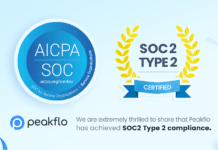According to a survey, the percentage of sales collected late by SMBs is 57%
To overcome this roadblock and propel revenue growth, SMBs must find a solution. The solution lies in accelerating payment collection, and achieving this goal involves optimizing your process. In this situation, the accounts receivable aging report comes into play.
The Accounts Receivable Aging Report is an invaluable tool for SMBs striving to strike a delicate balance between maintaining healthy cash flow and nurturing customer relationships. The report serves as your compass in navigating the credit and collection process.
In this blog, we will delve into the significance of the Accounts Receivable Aging Report, its components, and strategies to leverage its insights for financial success.
What Is an Accounts Receivable Aging Report?
An accounts receivable aging report is a financial document that provides a detailed breakdown of a company’s outstanding invoices based on the length of time they have been unpaid. To highlight the aging process of receivables, this report categorizes invoices into several aging buckets, often in 30-day intervals.
The primary purpose of this report is to track and manage the timely collection of payments from customers. By assigning invoices to separate aging buckets, companies can detect past-due payments and implement suitable measures to retrieve them.
Components of an Accounts Receivable Aging Report
An accounts receivable aging report typically contains the following information:
Customer Details: Customer information is crucial for targeted communication and collection efforts. The report often includes details such as the customer’s name, contact information, and so on.
Invoice Details: The report typically includes detailed information about each invoice, such as the invoice number, date of issue, and due date. This information serves as the foundation for understanding the aging of each receivable.
Aging Buckets: Invoices are grouped into aging buckets based on the number of days outstanding. Common aging buckets include 0-30 days, 31-60 days, 61-90 days, and over 90 days. This categorization provides a visual representation of the time elapsed since the issuance of each invoice.
Total Outstanding Amount: Each aging bucket and the overall report will showcase the total outstanding amount for easy reference. This number is crucial for evaluating the overall health of an organization’s accounts receivable.
Notes: An additional section includes notes or comments, providing context or explanations for specific cases. This allows for a more comprehensive understanding of individual circumstances and aids in making informed decisions regarding collection strategies.
How to Create an Accounts Receivable Aging Report?
Step 1 – Review Outstanding Invoices
Start by reviewing all outstanding invoices. Ensure that you have up-to-date information on each invoice, including the invoice number, date of issuance, and the original invoice amount.
Step 2 – Segregate Invoices Using Aging Schedule
Utilize an aging schedule to categorize invoices based on the length of time they have been outstanding. Common aging intervals include 0-30 days, 31-60 days, 61-90 days, and 90+ days past due. This segmentation offers a detailed view of the aging status of every invoice.
Step 3 – Identify Customers with Overdue Accounts
From the segregated list, identify customers with overdue accounts. These are the clients who have not made payments within the agreed-upon time frame.
Step 4 – Categorize Customers
Categorize these customers based on the total amount due and the number of days their accounts have been outstanding. This step allows for a more detailed understanding of the overdue accounts, helping prioritize collection efforts.
Integrating AI-powered analytics into your accounts receivable solution streamlines and simplifies the entire process. In Peakflo, an accounts receivable aging report looks like this:
Why Accounts Receivable Aging Report Important for SMBs?
The accounts receivable aging report holds a pivotal role in the financial management of SMBs, offering crucial insights and benefits that contribute to overall process health. Here’s a breakdown of the importance of the report:
Early Detection of Payment Issues
One of the primary functions of the accounts receivable aging report is its ability to flag payment issues early on. By categorizing invoices based on their age, businesses can quickly identify overdue payments, enabling them to take proactive measures to address potential cash flow challenges.
Strategic Decision-Making
The accounts receivable aging report empowers SMBs to make informed decisions regarding their credit and collection strategies. With a clear visual representation of outstanding invoices in different aging categories, companies can tailor their approaches, applying more assertive measures for significantly overdue payments and gentler payment reminders for those in the early stages of aging.
Optimizing Cash Flow
Efficient cash flow management is critical for the sustainability of SMBs. The accounts receivable aging report provides a real-time snapshot of the timing of incoming payments, allowing businesses to plan and allocate resources effectively. This optimization is particularly crucial for meeting operational expenses and pursuing growth opportunities.
Customer Relationship Management
The accounts receivable aging report aids in customer relationship management. Businesses can distinguish between reliable and occasionally late payers by finding trends in payment behavior. This information enables a more tailored approach to customer communication and fosters strong customer relationships.
Collection Strategy Development
Armed with data from the report, SMBs can develop and refine their collection strategies. The accounts receivable aging report acts as a guide for improving the collections process, whether it’s adopting automatic dunning for delayed payments, giving incentives for early settlement, or escalating overdue accounts.
Credit Risk Management
Businesses can evaluate the success of their credit practices by checking the aging report regularly. If certain customers consistently exhibit delayed payments, adjusting credit terms may be necessary to mitigate future risks, write-offs, or bad debts.
Closing Thoughts
Usually, SMBs avoid creating the accounts receivable aging report because they take a lot of time and need manual intervention. This includes matching customer payments with invoices and keeping an eye on overdue payments. However, with Peakflo’s Accounts Receivable Automation solution, you can streamline the complete process. The solution allows you to quickly understand the payment behavior of your customers, track aging receivables, and set up workflows accordingly.








































